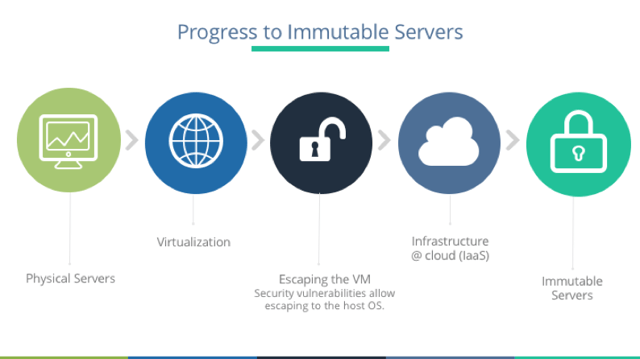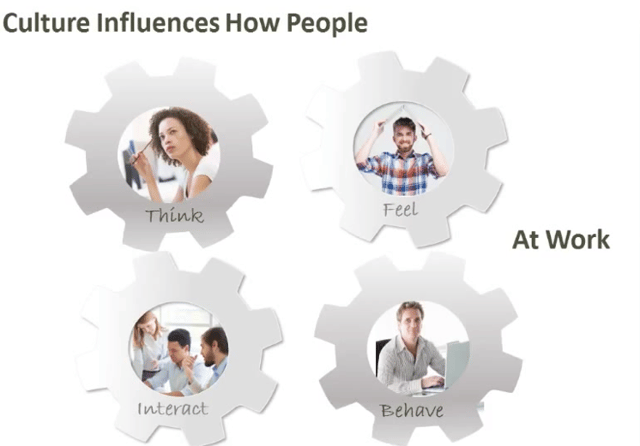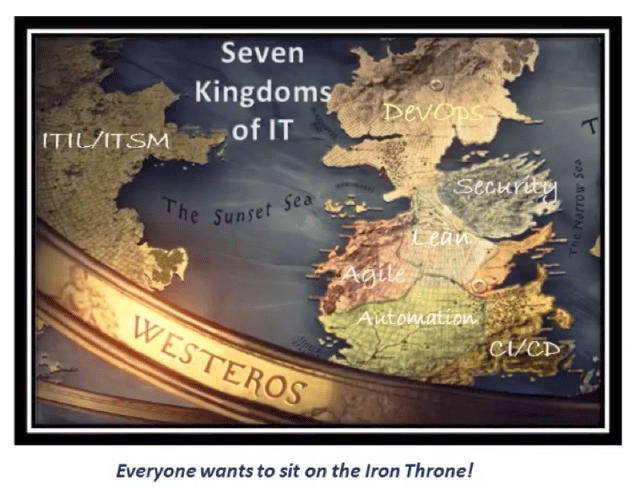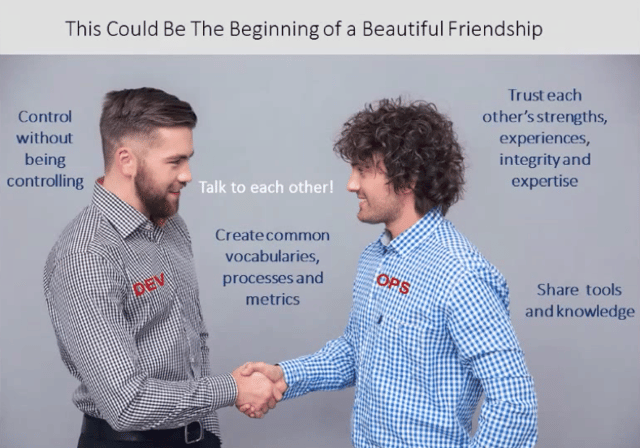We have Continuous Integration and we have Continuous Deployment, but what’s continuous across all of what we do is people. Even when tasks are automated, someone wrote the automation. So, Jayne Groll evangelizes about Continuous Everyone.
Jayne is the CEO of the DevOps Institute and the author of Agile Service Management Guide. She talked about Continuous Everyone at the 2016 All Day DevOps conference. She describes it as “about people, culture, and collaboration mapped into your value streams.”

We all hear about the importance of people, culture, and collaboration, but how well are they integrated into our organizations and processes? Is it in everything we do? Is it inherently continuous?
It all starts with culture. The Business Dictionary defines culture as “The values and behaviors that contribute to the unique social and psychological environment of an organization.” As Jayne points out, culture influences how people think, feel, interact, and behave at work.

We all have a vision of a euphoric culture. For most, that doesn’t reflect the reality of the current culture, which is generally Games of Thrones. Everyone wants to sit on the Iron Throne: ITIL/ITSM; DevOps; Security; Lean; Agile; Automation; and, CI/CD. Traditionally, each of these functions has operated in isolation, convinced they are the most important cog in the machine. Now, DevOps has forced us to talk for the first time in 40 years.

Once we acknowledge a problem, there are only 11 more steps. So, next, improving culture begins with addressing the root cause of cultural fails:
- Language barriers (industry language)
- Tribal knowledge
- Poor communication
- Thick silos
- Disparate processes
- Incompatible automation
- Inadequate collaboration
These cultural fails - both the cause and a symptom of thick organizational silos - must be broken down because they cage people’s creativity, and creativity is something you can’t automate.
Now, people typically participate in the Continuous People Pipeline like this: Develop → Commit → Build → Test → Deploy and APIs built in between. Jayne advocates that we need to focus on Application People Interfaces between engineers and testers and ops teams. We need to let computers do the boring, repetitive tasks and let people solve problems and focus on high value activities.
Since not everything can be automated, Continuous Engagement is critical. While some advocated for NoOps (everything is automated), we should focus on NewOps to capture the talent and expertise in operations we need to leverage for tasks only people can do, such as:
- Provide input and feedback
- Design pipelines
- Configure automation and APIs
- Review test and other output
- Design metrics
- Facilitate feedback loops
- Interface with the customer
- Solve problems
- Exchange ideas
- Be innovative
The bottom line is that this could be the beginning of a beautiful friendship. We need to reinvigorate the lost art of the dialogue. Actually talk to each other.

This begins with trust. Every aspect of the Continuous People Pipeline is filled with expertise, integrity, and people that want to learn. There is a trust. You have to trust each other’s strengths and take the opportunity to engage on a continuous basis.
It is only together that we can continuously improve.
You can watch Jayne’s entire talk online here. If you missed any of the other 30-minute long presentations from All Day DevOps, they are easy to find and available free-of-charge here.
Finally, be sure to register you and the rest of your team for the 2017 All Day DevOps conference here. This year’s event will offer 96 practitioner-led sessions (no vendor pitches allowed). It’s all free and online on October 24th.



.png?width=610&name=J1_ModernCybersecurityBook_Promo%201200x628%20v2@2x%20(1).png)



